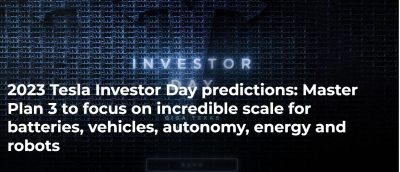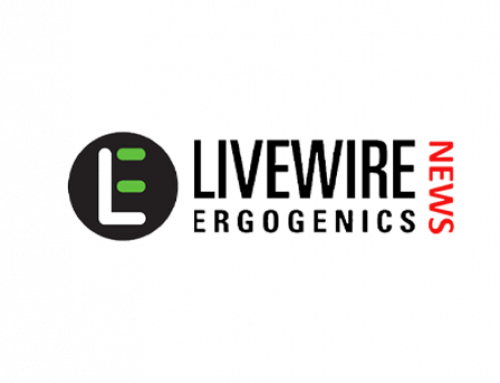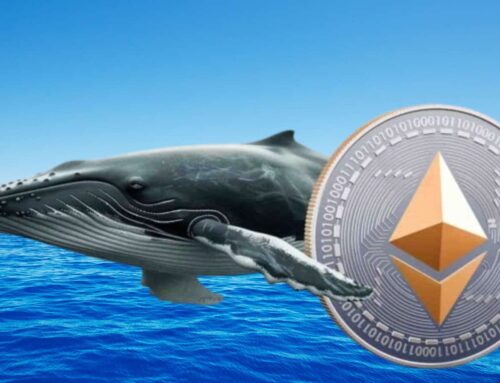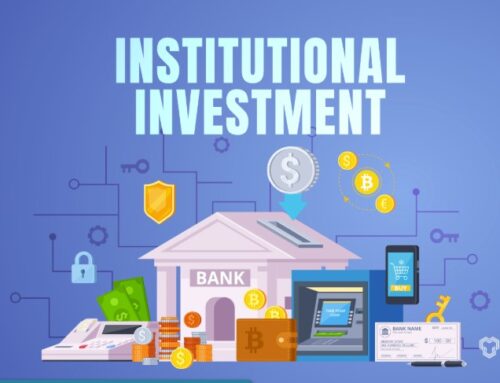Tesla Investor Day
February 26, 2023
2023 Tesla Investor Day predictions: Master Plan 3 to focus on incredible scale for batteries, vehicles, autonomy, energy and robots
To consider what may be in MP3, let’s first reflect on what we have seen in MP1 and MP2 and how much progress there has been against each item.
| Master Plan 1 [Link] | Status |
|---|---|
| Build sports car | Completed (original Roadster) |
| Use that money to build an affordable car | Completed (Model S/X) |
| Use that money to build an even more affordable car | Completed (Model 3/Y) |
| While doing above, also provide zero emission electric power generation options | Completed (Solar Panels/Roof) |
| Master Plan 2 [Link] | Status |
|---|---|
| Create stunning solar roofs with seamlessly integrated battery storage | Completed (Product exists, but not at scale) |
| Expand the electric vehicle product line to address all major segments | Incomplete. Model S – Large sedan Model X – Large SUV Model 3 – Mid-size sedan Model Y – Mid-size SUV Semi – large Semi truck (tiny volume) Ute/Truck – Cybertruck (unreleased) Hypercar – new Roadster (unreleased) Bus – NA Van – NA Mid-sized commercial truck – NA Small SUV – NA Small sedan – NA |
| Develop a self-driving capability that is 10X safer than manual via massive fleet learning | Incomplete (FSD beta has impressive capabilities, but is not 10x safer than a human). |
| Enable your car to make money for you when you aren’t using it | Incomplete |
Given there are a number of items still incomplete from the last Master Plan, you may question if we’re ready for a Part 3. MP1 was released in 2006, MP2 was released 10 years later in 2016, so we’re actually 3 years shy of the regular cadence for these updates.
Musk has shared a couple of Tweets recently to help frame the event, unlike other recent ‘Tesla Days’ this one does not appear to be a recruitment drive, although depending on what’s shared, may have that side effect. Don’t expect too many announcements that will move the stock in the short term, this is all about the next decade, so will likely appeal much more to someone with a 10yr+ horizon, than someone who looks at the next 12 months.
Here are some of the key elements that we can expect to hear about during the event, all of which are focused on increasing the scale of Tesla’s operations.
First and foremost, Tesla’s core goal is to accelerate the transition to sustainable energy and transport. To achieve this goal, the company needs to make more cars, make them cheaper so that more people can afford them, and create a robotaxi service to lower the cost of per-ride transport. These are all critical elements that Tesla will likely address during investor day, as they are essential to achieving the company’s long-term vision.
However, to increase production to the necessary levels, Tesla needs to secure the supply chain necessary for growth. This means the company needs to have raw material agreements in place and may need to acquire mining operations downstream to ensure a steady stream of raw materials for its manufacturing processes.





MORE GIGAFACTORIES
New Gigafactories will also be a key topic of discussion at investor day. Tesla will likely announce how many more factories they plan to build in the next decade and how many will be dedicated to battery cell manufacturing, energy products and vehicle production.
Currently, Tesla has 4 Gigafactories for vehicle production located in Freemont, CA, Shanghai, China, Berlin, Germany and Austin, Texas. This won’t be nearly enough to achieve their previously stated goal of manufacturing as many as 20 million vehicles per year by 2030.
The latest shareholder deck from Q4 2022 shows Tesla has a total combined manufacturing capability of 1,900,000 units. The Cybertruck is currently in the Tooling phase and is expected to go into production this year. The Tesla Semi has already started shipping in low volumes out of Nevada.
If we round up the current production capacity to 2 million units per year, this leaves the outstanding challenge for Tesla at a 10x growth in capacity in just 7 years from now.
We’ve seen recent Gigafactories being built in 18-24 months which means if Tesla announces new Gigafactory locations on March 1st, we’d be well into 2025 before they started making vehicles. Tesla has shown they’re an able to run two factory builds simultaneously, but we don’t need just 2 more Gigafactories, we need a lot more.
If we take Texas, which is estimated to be capable of around 2 Million vehicles once full scaled, you’d need 9 additional Texas-sized Gigafactories to achieve the goal of 20 Million units per year. This would be true if Tesla used the same floorspace, and production rate as they do today, but that’s unlikely. Each time Tesla builds a factory, they improve over the one before and with new vehicle programs, they often use newer, faster techniques.
While there are obvious advantages in producing vehicles close to their destination, the land Tesla acquired to build the Texas Gigafactory was large enough to support multiple Gigafactories at that site. This would be my guess at how they scale production faster than we’ve ever seen before.
As we’ve seen with the front and rear casting with the Gigapress, I expect we’ll hear about how the robotaxi vehicle will be produced much faster, than any other vehicle on the planet thanks to new manufacturing techniques.
Tesla has another Gigafactory located in Sparks, Nevada which produces electric motors, energy storage products, vehicle powertrains and batteries—producing billions of cells per year. Tesla has already announced an expansion to grow Gigafactory Nevada with two new facilities: a 100 GWh 4680 cell factory and the first high-volume Semi factory.
That last statement certainly suggests there’ll be additional locations that manufacture Semi and with fleets of diesel-powered Semi trucks around the world, expect Tesla to consider how they can scale globally to meet demand.
Gigafactory New York is often forgotten about but plays an important role for the company. Here the company builds Solar Roof, Solar panels and electrical components for Superchargers. As we know Tesla has done a great job at rolling out their Supercharger network and has recently begun opening it to other brands. It will be important for Tesla to detail how they plan on keeping charging infrastructure rollouts ahead of EV adoption.
Another aspect of scaling out production is the cost of new factories or factory expansion. These don’t come cheap at somewhere between $5 and $10 billion dollars. Tesla made around $19 Billion in gross profit last year, which means if they allocated all of that, they’re likely in a position to fund 1, maybe 2 per year (assuming profit growth over time). This means they would need to take on a lot of debt to finance expanded operations. A Gigafactory does appear to have a great ROI, as demand for products is not a challenge for Tesla at this time.

MORE BATTERIES
The key to Tesla’s business and one of the biggest limitations to scaling to higher production volumes is the number of batteries Tesla can acquire from third parties, or make themselves. As we learned at Battery Day back in 2020, Tesla announced they were getting into battery production. Since then their 4680 cells have gone into shipping vehicles, but outstanding is a ramp that supports current and future growth targets.
As other automakers ramp their EV models, the global fight for batteries and the raw materials that go into them will become even more fierce than what we see today. Investor Day would be a great time to address this challenge and let the world know how Tesla is controlling for this challenge.
Tesla has always been known for its innovative vehicle designs, and we can expect to hear more details about their robotaxi vehicle, due around 2024. We understand this is likely built on the 3rd vehicle platform (Model S/X being the first, the Model 3/Y being the second, then Robotaxi being the 3rd).


MORE VEHICLES
It’s possible we get insights into additional vehicle segments Tesla wants to disrupt, with commercial vehicles still responsible for a significant portion of emissions. Investor day could include a commitment from Tesla to go after a van, delivery truck, bus, train, and even a dedicated autonomous work platform for specialized tasks such as shipping containers, garbage collection etc.

MORE AUTONOMY
While Tesla’s robotaxi ambitions are likely to go a long way in replacing taxis and Uber ride-sharing, it’s also likely that Tesla ventures into the Food delivery services industry. It’s hard to imagine that a decade from now, Tesla hasn’t solved autonomy and with help from their humanoid robot, doesn’t then leverage their technology to storm into servicing last-mile delivery at scale.
Tesla’s desire and ability to venture into these new business areas will be of particular interest to investors.
Services will also be on the agenda at investor day. Tesla is likely to announce new fleet management software that will make it easier for businesses to manage their electric vehicle fleets.
To date, Tesla hasn’t shipped Autopilot or FSD on the Semi, but the opportunity for a dramatic increase in safety for the transport industry is huge. Today, the cost of diesel and the cost of the driver make up a significant proportion of the cost base to move goods around the world. If Tesla can deliver autonomy to commercial operators, their ability to charge for that feature is enormous, but FSD has to reach level 5 for this to be fully recognised.






MORE ENERGY STORAGE
Tesla’s energy products, including the Powerwall and grid-scale and country-scale solutions, will also be a topic of discussion. Investors will want to know more about the upcoming release of the Powerwall 3. We’re expecting PW3 will include a shift to LFP battery chemistry and while it may take slightly more physical space in the garage, is likely the path to make home battery storage far cheaper. Millions of homes around the world have solar and many of those would like to add energy storage, but the price tag doesn’t make sense. If Tesla could deliver a PW3 at scale at an affordable price, it could account for a significant income stream, as long as they can create them at scale.
Tesla’s other energy products like the Megapack are ramping, but the company’s plans for larger-scale energy storage solutions would certainly be a good inclusion for the agenda at Investor Day. In Australia, some states are leading others when it comes to transforming the makeup of the grid, with batteries playing an increasing role as more renewable energy sources come online. Tesla should be thinking about country-level battery programs and how to reach a scale that allows them to support the world and to do this, need to find all limiting factors and address them.

MORE ROBOTAXI
Of course, the most highly anticipated product from Tesla is robotaxi. Investors will be keen to hear about Tesla’s latest progress in FSD adoption, what’s happening with V11 of the software and what the roadmap looks like to get to level 3, 4 and 5.
As an international customer, I’m keen to understand more about the global plans for delivering FSD, as Tesla has sold their software package to many countries outside the current Beta availability of US and Canada.
Autonomy holds a massive revenue and profit opportunity, but there’s a big outstanding question around Tesla’s Robotaxi ventures. Previously Tesla had stated that owners would be able to enrol their car in the fleet and their vehicles would make money for them, giving ride shares during the day.
Looking forward to a dedicated robotaxi vehicle, there’s no doubt Tesla would be in a much better position to beat owners in providing rides to customers. Tesla could create dedicated Supercharger locations for robotaxis, they could produce the cars much cheaper than customer cars, and if they’re able to reach full autonomy, they could even make them with fewer parts (no wheels and pedals).
It’s still too early to expect hard details on the robotaxi’s release date, size and price, but we may hear about the expected production volumes and which markets they plan on venturing into.
The timeline for delivering a dedicated robotaxi in 2024/2025 is an interesting one, as you’d need to start planning production now, a time when FSD is not ready. This means it’s likely the platform would be designed with a wheel and pedals for humans, to cover the scenario that the software hasn’t reached level 4/5 by that timeframe, then simply update the design and remove these components once it is ready.

MORE ROBOTS
Finally, investors will be interested in hearing about Tesla’s progress with their Teslabot, a humanoid robot designed for boring and dangerous tasks. Tesla is expected to provide an update on the development of the Teslabot and potential use cases within their own factories. The opportunity to displace human labour, working without breaks, and without distraction is massive and a progress update would enable a greater ability to forecast when they are likely to start finding their way to volume production.
In conclusion, Tesla’s investor day promises to be an exciting event with many new developments and announcements. By focusing on increasing the scale of its operations, Tesla can make a significant impact on accelerating the transition to sustainable energy and transport. Investors and the general public will be eagerly waiting to hear what Elon Musk and the Tesla team have in store for the company’s future.
Tesla’s 2023 Investor Day will be held on March 1, 2023 (us time) at Gigafactory Texas. This invite-only event, will also be live-streamed online. More information at Tesla.
Search
RECENT PRESS RELEASES
Related Post





